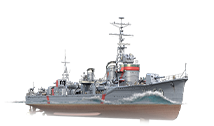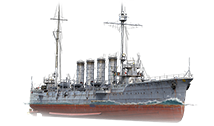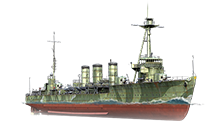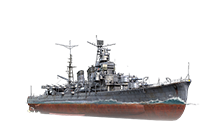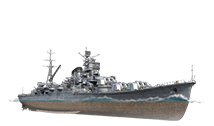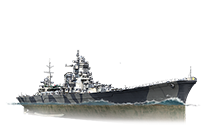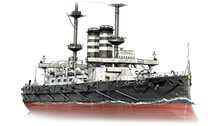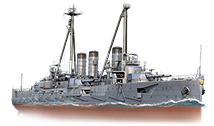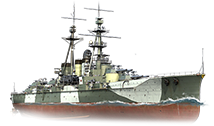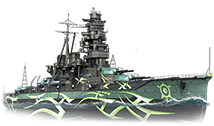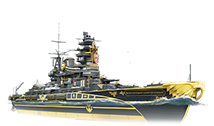艦艇:日本艦艇

However, several mistakes and oversights during the war resulted in their near-annihilation by the United States Navy. Design flaws, stemmed from cramming as much weaponry onto a limited displacement, caused certain ships to be top-heavy and unstable. While concentrating air assets into a single, cohesive force was as effective as it was revolutionary, their carriers were inadequately protected from counterattacks due to lack of radar, faulty design and configuration of anti-aircraft guns as well as ineffective fire control systems. The surprise attack on Pearl Harbor, Hawaii of 7 December 1941 was a tactical victory but a strategic error, bringing into the war a nation that, while initially under-prepared and as yet unwilling to go to war, had near-limitless resources and unmatched production capabilities. Compounding the error, little to none of the support facilities based in Pearl Harbor — naval repair yards, fuel depots, logistics infrastructure — were attacked, allowing the United States to quickly recover and strike back with a vengeance from their primary naval base in the Pacific. In contrast, Japan did not have the capabilities to replace their losses as quickly, were incredibly dependent on imports — reducing that dependency was actually one of the major reasons for Japan's expansionist desires — and their unprotected shipping lines due to under-investment in anti-submarine and anti-aircraft warfare allowed the United States Navy to slowly starve Japan into submission.
Japanese ships tend to have great variations in design; each class encountered is likely to have noticeably different handling characteristics from the previous tier, a result of the IJN constantly experimenting with or influenced by different designs and doctrines. They boast consistently superior torpedoes, accurate and long-range guns with high alpha damage, and outstanding concealment and mobility; however, they suffer from inferior survivability and anti-aircraft defenses. Their play style is very similar to the "decisive battle" doctrine that dominated IJN tactics: strike fast and strike hard with precision at targets of importance and/or opportunity, but every hit taken in exchange will be painfully felt.
Destroyers
Gameplay
Japanese destroyers rely on remaining unspotted and depend heavily on making good use of their torpedoes; the tech tree splits at Tier V after Isokaze, with one line focusing on torpedoes and the other on gunnery, the latter currently ending at Tier VIII.
The line focusing on torpedoes have weak, slow-turning guns that are generally not worth firing unless they happen to be pointing in the enemy's direction. Even then, it is frequently better to hold fire to maintain concealment. Concealment issues are exacerbated with the 發煙機 (The gunnery-focused line does not mean that they become pseudo-American destroyers, but many of the problems that plague the torpedo-focused destroyers are addressed to a certain degree, increasing their all-round capabilities while still keeping the distinctive characteristics of Japanese destroyers. However, all these improvements are "implemented" in an arduously gradual process — captains will only start seeing real differences once they reach Shiratsuyu and Akizuki at Tiers VII and VIII, respectively. Their turret-turning speeds are improved, their guns fire faster and further (shell damage and velocities are largely the same) and they have better anti-aircraft suites. Amazingly, their concealment values are better than that of the torpedo-focused line, and both lines have access to the same models of torpedoes. What's more, the gunnery-focused line gets a better version of the 魚雷裝填加速裝置 (
Cruisers
Gameplay
Japanese cruisers tend to have fewer guns housed in slow-turning turrets, coupled with excellent maneuverability and concealment values. Virtually all Japanese cruisers are equipped with a complement of torpedoes that are on par with their destroyer cousins. At the higher tiers, their torpedo tubes are often located aft of the vessel. Do not be fooled if a Japanese cruiser starts turning away mid-fight; they may have very likely just launched a spread of torpedoes. From Tier V's Furutaka onwards, they are equipped with accurate, powerful guns that, while lacking in rate of fire, have reasonable shell arcs and velocity and are able to reliably penetrate or set their enemies on fire; their high explosive shells have some of the highest chances among all cruisers in World of Warships to set targets on fire. Their anti-aircraft suites are sufficient for self-defense, but captains will be hard-pressed to protect their teammates. Tier X's Zao is considered the very pinnacle of what Japanese cruiser design: difficult to detect, she strikes first and hard. She is capable of giving enemy ships a nasty surprise when they are at close range and is a highly effective surface combatant in all situations.
Battleships
Gameplay
Japanese battleships were somewhat restricted by the Washington Naval Treaty, forcing them to resort to unusual — but often innovative — designs in outfitting their battleships. This resulted in battleships that have widely varying characteristics: the ponderous and slow Kawachi; the fast and agile Kongo; and the well-balanced Nagato; culminating in the crown of their battleship tree, the formidable Yamato. Japanese battleships often have the highest caliber guns with the longest ranges of their tier, which they can extend even further still with Spotting Aircraft, allowing them to rain destruction upon their enemies with impunity. Many of them have good speeds and agility that belies their size and class, but their armor protection frequently lags behind their counterparts of other nations - it tends to be more evenly spread out around the entire ship, so while their citadels may not be as well-protected, they have few obvious weak spots. Like their cruiser cousins, their anti-aircraft firepower is sufficient for self-defense, but captains will want cruiser support to ward off more concentrated aerial assaults.























